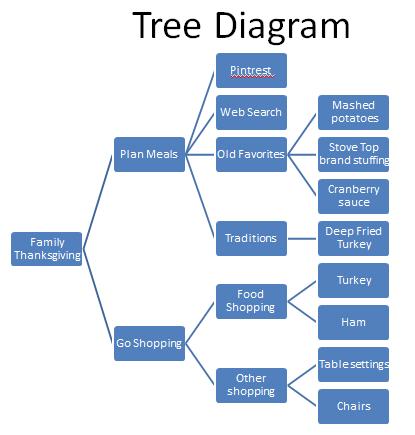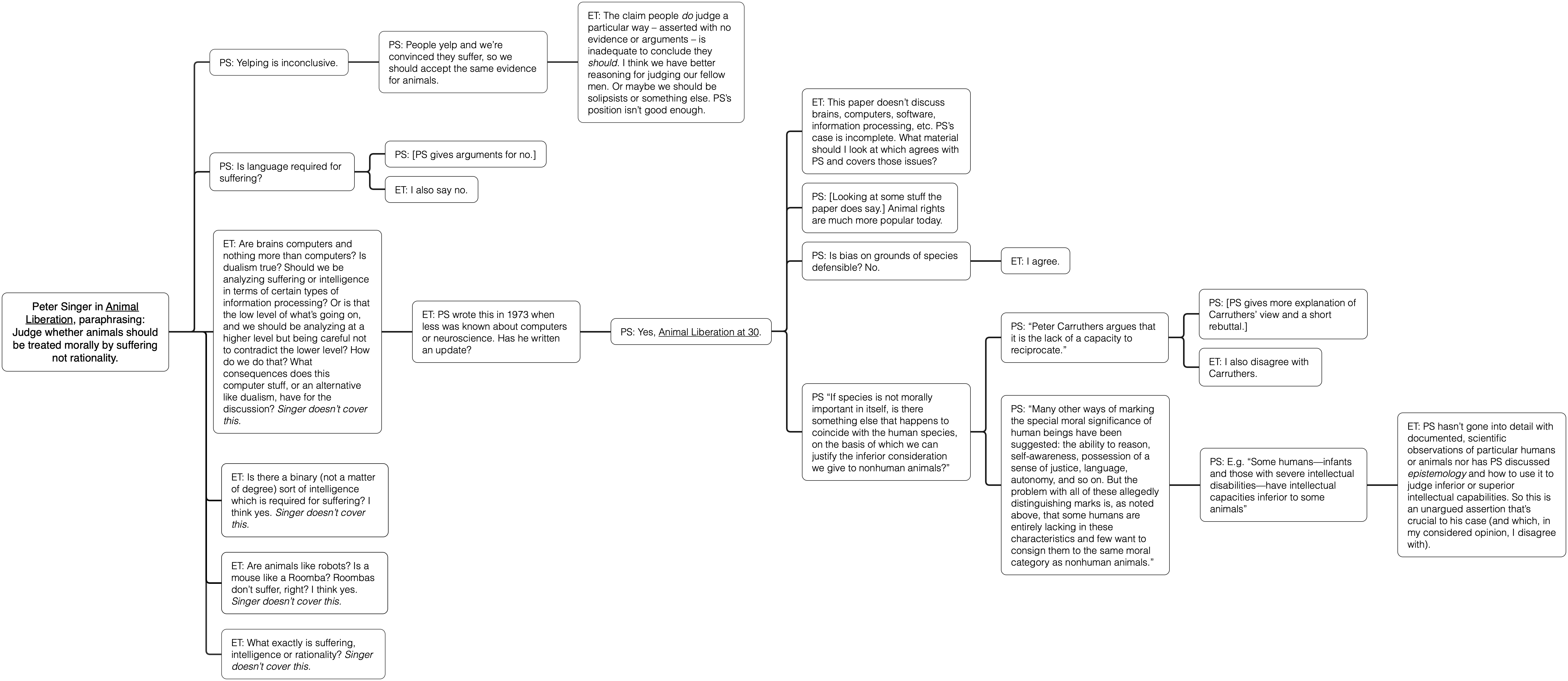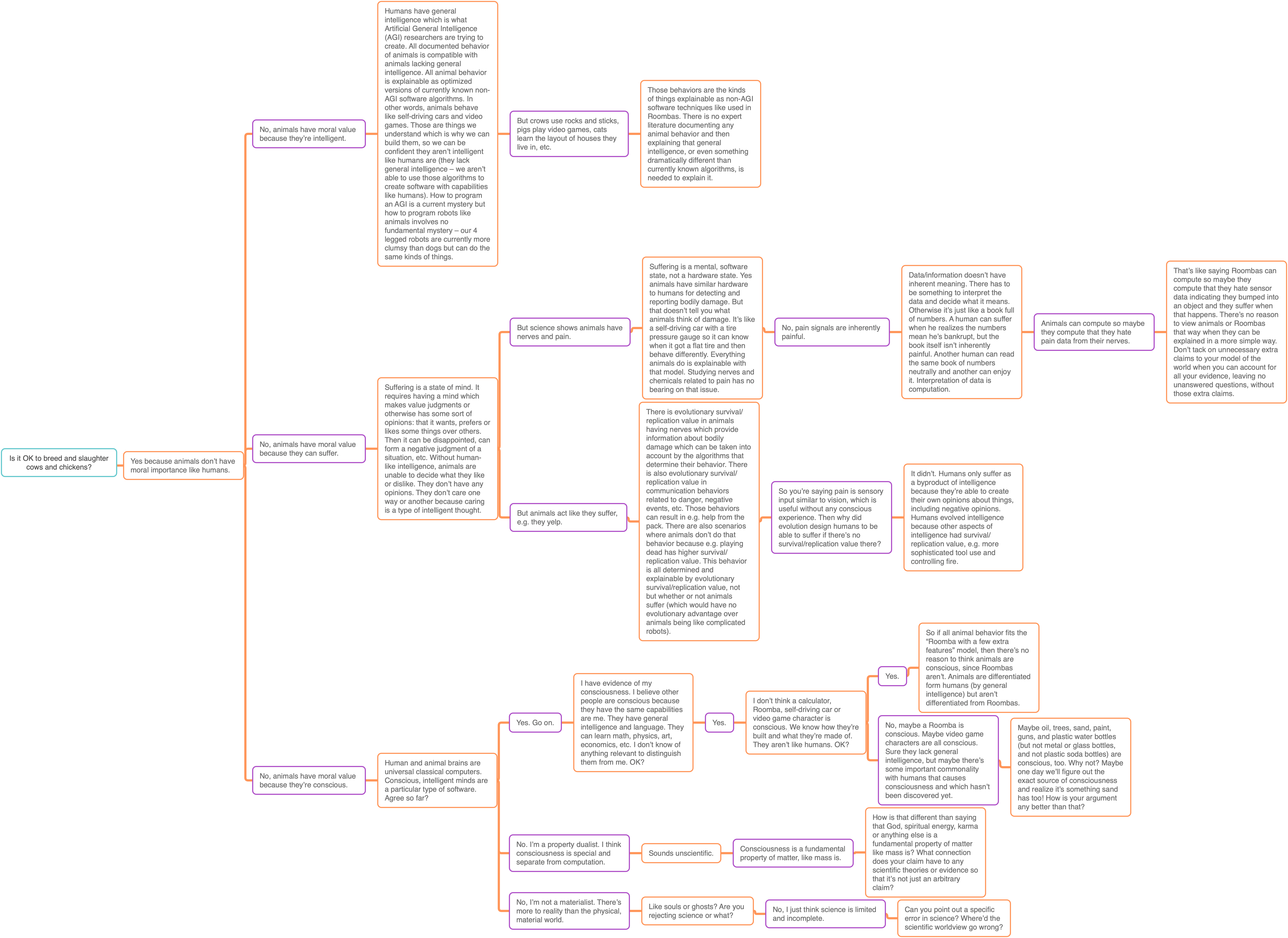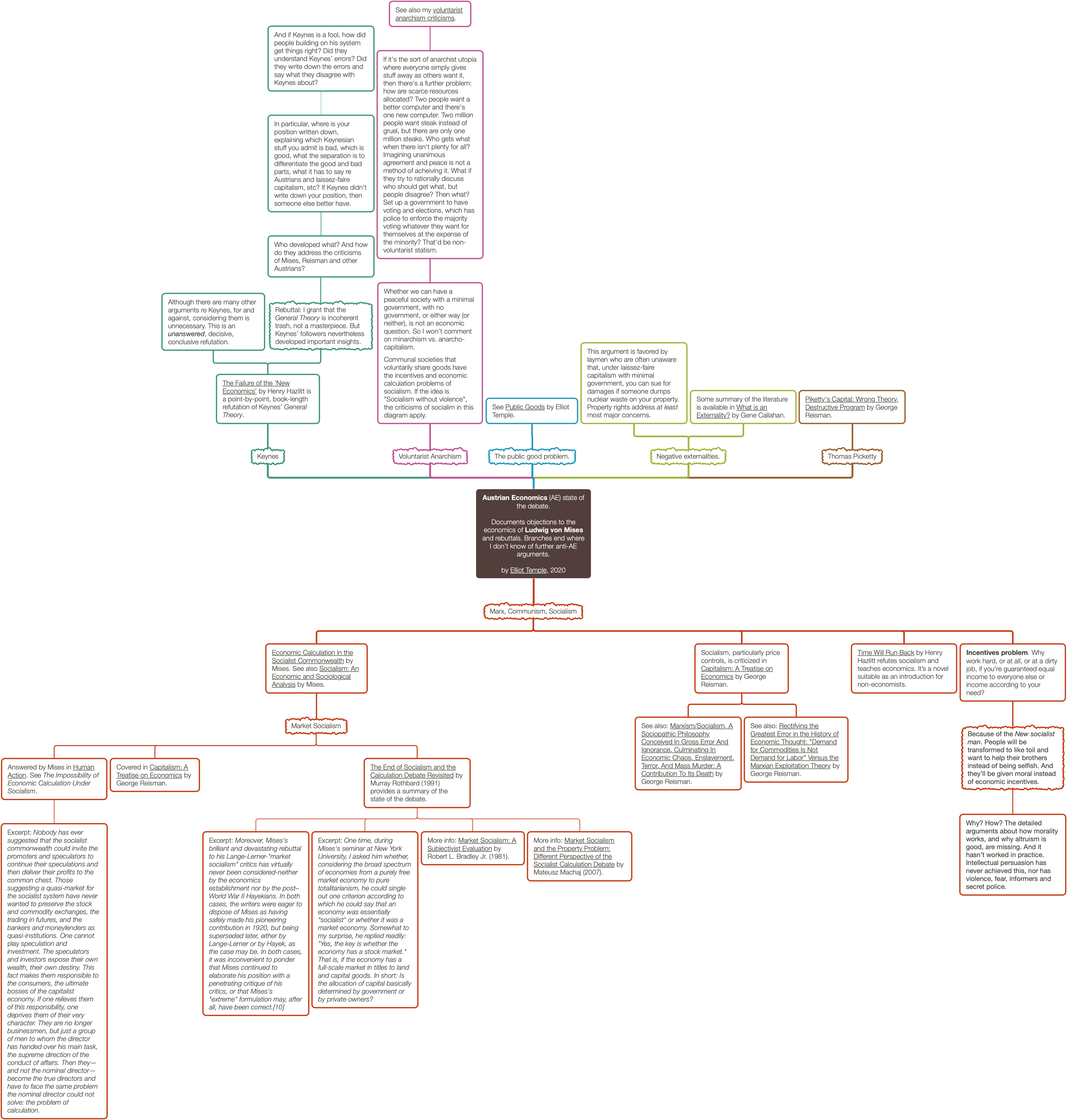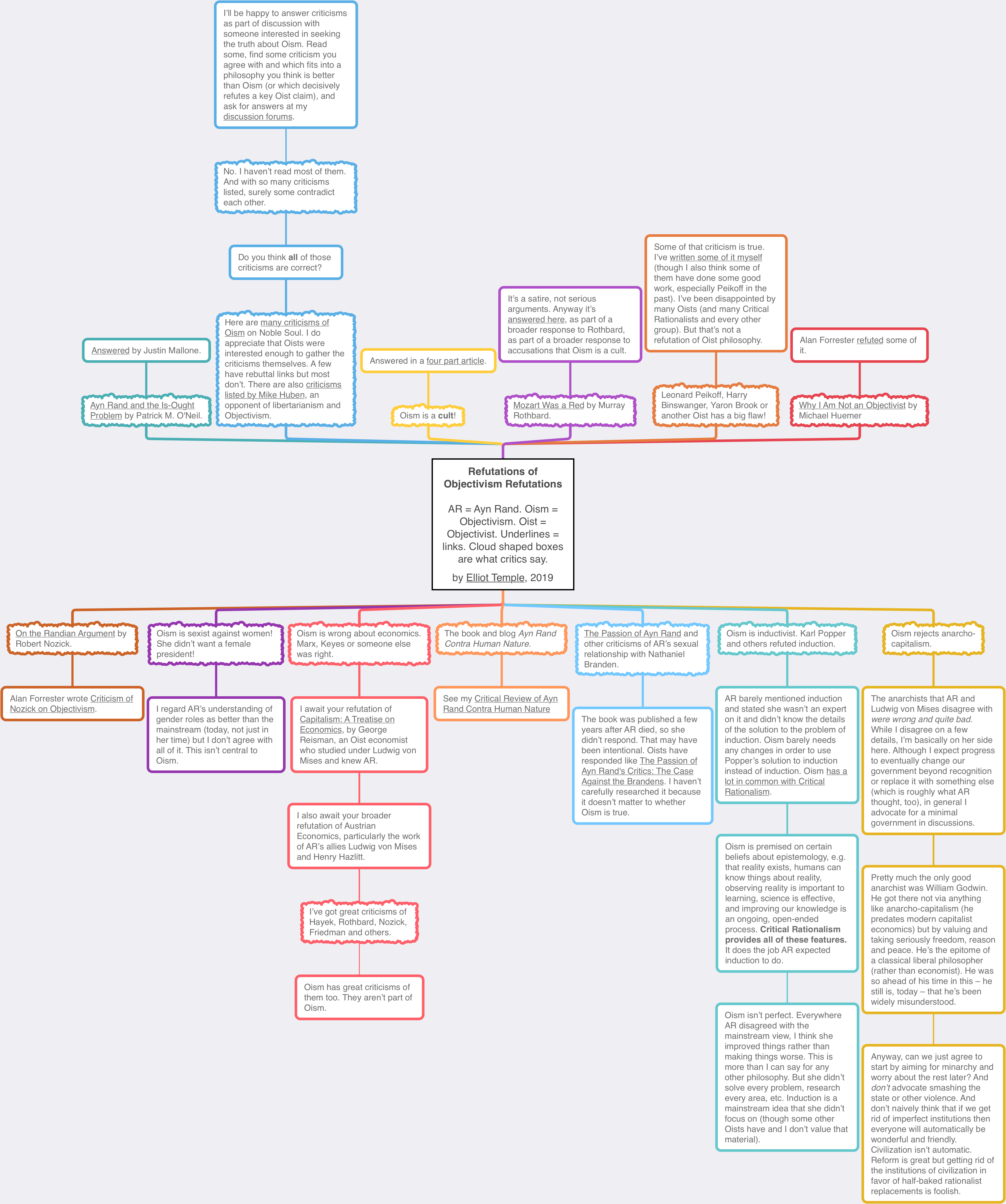When you have a discussion, it’s important to understand what is a reply to what, and what didn’t receive a reply (especially direct questions that aren’t answered).
To track this, draw a tree diagram. Put the initial thing someone said on top, then connect replies below it. Then for the each reply, put replies to it below it and connect them. And so on. It looks like this (real discussion, then tree):

Use abbreviated versions of what was said. Treat this like an overview, outline or notes. Make it condensed so it’s easier to see the whole discussion at once. Notes (text that doesn’t represent what someone said) can be put in square brackets. The tree helps show the structure of the discussion while having only short notes about what was said.
If it gets too complicated, you can split it into multiple diagrams. Write “subtree [name]” as a reply, then make a second diagram with that name which represents that part of the tree. It’s just the same as if you had one giant diagram except you took a part of it and moved it to a separate piece of paper or computer document. You can make documents that zoom in on specific parts of the overall discussion tree. You can also make an extra-abbreviated summary tree which leaves a lot out, then make some more detailed trees for some parts.
You should do something to indicate who said what, e.g. put their initials or use different colors.
It’s good to mark what didn’t get a reply and non sequiturs (comments that aren’t responsive, don’t engage with what they reply to). You could also mark direct questions, or at least direction questions that weren’t answered.
In my example, a green outline is Jack Dorsey, red is me, and black is an anonymous poster named A. Bold indicates a direct question (I paraphrased some things as questions but only bolded if it was a question in the original text). Dotted lines are non sequiturs. Ovals are statements that were replied to and rectangles are statements that were not replied to.
You can keep a tree in chronological order if you extend the lines between replies. Each row can be a message someone sent. If someone replies to an old point, draw a long line from it down to the current row. You can draw horizontal lines the show the rows. This will help with complicated discussions. Look at how my example tree is organized in rows. You never see claims from the same person in the same row, and every row corresponds to a specific message (I wrote three messages in the discussion and I have three rows, same for A).
Trees help you understand the discussions you have. Practice making trees for many of your discussions until it’s easy. Also practice doing it with other people's discussions. (If other people's discussions are easier because you're less emotionally involved or biased, start there; if it's harder because you understand what's being said less, start with your own.) Mentally keeping track of trees like this is what people who are good at discussions do (except when they actually write notes). If you write them down a bunch of times, you’ll get way better at remembering them.
When you have a difficult discussion with someone, if you both share your tree diagrams, you can compare and see where you view the discussion differently. This helps clear up misunderstandings and other problems.
Tree Analysis
The tree diagram makes it easy to see that A wasn’t responding to most of what I said (look for the red rectangles and the dotted lines). You can also see the two things from A that I didn’t reply to. And you can see what happened with direct questions: first, no real answer, just a vaguely implied answer that doesn’t make sense (I asked the point of what he was saying and he implied no point) and then a non sequitur reply, that does not answer the question, to my followup question trying to ask the same thing again.
It’s hard to perfectly represent discussions as summary trees but you can represent a lot of information this way. It’s useful even if it’s not 100% complete. In this case, the tree leaves out an issue that helps explain why I didn’t reply to the claim that debates are irrational.
I said:
You haven't given reasons nor any way for me to learn that you're right and change my mind.
And A replied criticizing me for mentioning debate, saying:
learning from each other is what matters.
I had just complained about the lack of any opportunity to learn from him, and then he criticized me because, allegedly, I wanted to debate in a non-learning way. That’s unreasonable and it’s part of a pattern where he didn’t engage with any substantive thing I said (look at all the square rectangles, plus what happened with my direct questions).
Discussion trees are literally and technically equivalent to bullet point outlines with nesting (indenting). You nest/indent replies under what they reply to. That represents the identical information as a tree with lines indicating what is a reply to what. If you don’t understand this, practice creating both the tree and the outline until you do understand.
Making Trees
You can make tree diagrams with pencil and paper, art apps (FYI vector art apps like Affinity Designer make more sense than pixel or photo based apps like Photoshop, and more basic tools can work too, and there are mind mapping and diagramming apps), OmniGraffle, or Graphviz. For info on generating tree diagrams from s-expressions, see my email reply to Justin (who found a website which does it), sharing my Ruby script which converts s-expressions to Graphviz files. Here’s the s-expression I used to create the example tree:
("No political ads on Twitter"
("social status, favors, friends, pull"
("money shouldn't buy influence"
"no info that could change my mind")
(disagree
"no reasons"
("debate?"
"debates are irrational, aren't you a Popperian?")
("point?"
("[implied] there is no point"
("purpose of contradicting me?"
"opinions are allowed here")))))
"Less upward mobility"
"Can't put money where mouth is"
"Read Atlas Shrugged")
It’s worth learning to write trees as s-expressions. s-expressions are a general purpose intellectual tool. They’re a way of representing structured information/data.
Update:
See the Discussion Trees blog category for more tree examples.
See Mind Map software review for software choices.
